Greg Sez:
White Bear & Red Moon is Chaosium’s, and my, first game published. It is a board war game, with counters to represent the various army units and played upon a map laid over with a hex pattern to facilitate movement. Combat is done by comparing the values of opposing stacks of units, rolling a die for randomization, and consulting a Combat Results Table to find the outcome.
My intent upon creating it was to make a “do it yourself epic.” All stories have a setting, characters and plot. I would provide the characters and setting, and when played it would discover the plot. I wanted to include elements from the great epics of legend, which meant having armies as well as individuals, exotic beings and creatures, magic both low-level and devastating. And quests—yes, it had to have quests.
Thus burst Dagon Pass and the Red Moon; barbaric, heroic Sartar and the vast Lunar Empire into Glorantha. Once the game setting was established in Glorantha, the participants in this epic began striding forward from my imagination to populate it in profusion. Sir Ethilrist, the dragonewts, Cragspider, the Pharaoh, the Wasp Riders and the animal-riding nomads of Prax the rest became real.
Very early in its development I realized that all of my ideas would not fit into this game, and so I broke it into three parts. The first part became White Bear & Red Moon, with its epic warfare; the second Nomad Gods, set in Prax, to the east; and third (with the quests in it) Masters of Luck and Death, in the south.
It is set in the magical land of Dagon’s Pass and is the struggle between the invading Lunar Empire and the defending barbarian kingdom of Sartar. Many independent nations and tribes inhabit the map and can be gained as allies by one side or the other. Most units are of standard infantry and cavalry, but here too are a plethora of magical organizations. Armies and some of the independent powers have Leader units, called Heroes.
When I designed this I wanted the two sides to be as distinct as possible. Thus the empire has many units that are regular in their type and values, while Sartar has a hodge podge of different values. Another major difference is in the magic, wherein the Sartarites have units that provide “steady state” power, but the Lunar Empire gains their magic from the waxing and waning moon, and thus has units whose power rises and falls.
This game is largely responsible for defining the part of the world that has been popularized in subsequent gaming. As I mentioned elsewhere, the game was not even originally set in Glorantha, but after working on it for a while I realized that it fit very nicely into a large blank spot on my previous maps. Thus it was the first time that I discovered the Lunar Empire and Sartar. Thus the game established one of the distinct tropes of Glorantha: the red moon. Because of the movement distances, and one of the tactical problems I wanted to introduce for the Lunar player, the cycle was set at seven days.
The first edition of the game had a rule book of 8½” x 11”, was in a printed manila or white paper envelope, and had thin, die-cut counters. The unit counters had pictures of the units, all done by William Church, who also did he map. The Heroes were not drawn, but instead were represented by runes. The purpose of these was to be revealed in the third game, wherein the runes could be used in various ways to “spell out” magical effects that would gain allies and allow progression towards the exalted status of Pharaoh of the Holy country.
It was an instant hit. I was quite astonished, pleased and gratified at the reception of the game. Greg Costikyan, at the time a review but shortly to become a pre-eminent game designer himself, raved over the quality of the mimeography. He might have called it the ultimate effort in the craft. He also pegged its popularity by saying (and I paraphrase), “Games are popular because they have great designs and ules, or because they have great charm. This one has great charm.”
I was astonished that it sold so well, pleased that it was well received as a game (though not without criticism), gratified that my creativity was acknowledged and admired. It sold out quickly, and I decided to do a second edition and a follow up game.
The second edition had a rule book printed on legal-sized paper and folded over, being 8½” x 7” in final size.. This was easier to make into a book, and saved some money. I mimeographed this edition, too. The board was the same, but for unit counters I found a professional box-making company that would mount the unit counters on thicker cardboard and die cut them. This raised them to the quality of standard game counters. Also, I upgraded the container to be a resealable zip lock bag instead of paper envelope.
By the time of the third edition the industry and company had changed considerably. For one thing I was tired that no one seemed to be able to remember the correct name of the game, and also realized that it could just be catchier and thus more salable. We changed it to be Dragon Pass. The company was viable, making money even, and the print run would be larger. Thus the rule book (still in the 8½” x 7” size) was printed in offset, instead of mimeographed. Also, the original map, which had something of an archaic look to it, was redone by William in a glorious full color format that entirely matched the pictures he’d done for the counters.
And I now had a game company.
Editions & Related Editions
| SKU | Year | Name & Edition | Publisher | Notes |
|---|---|---|---|---|
| CHA1001e1 | 1975 | White Bear & Red Moon, 1st edition | Chaosium | |
| CHA1001e2 | 1976 | White Bear & Red Moon, 2nd edition | Chaosium | 800 copies |
| CHA1001e3 | 1978 | White Bear & Red Moon, 3rd edition | Chaosium | 1,000 copies |
| CHA1001e3.5 | 1979 | White Bear & Red Moon, 3rd edition (3.5) | Chaosium | 1,000 copies |
| CHA1001-X | 1980 | Dragon Pass | Chaosium | |
| 1983 | Dragon Pass | Avalon Hill | ||
| No. 849 | 1988 | ドラゴン・パス Dragon Pass | Hobby Japan | Japanese edition |
| 1993 | La Guerre des Héros | Oriflam | French edition | |
| 2014 | Dragon Pass VASSAL Module v0.3 (2017) | with permission of Moon Design | Based on Chaosium (1981) edition |
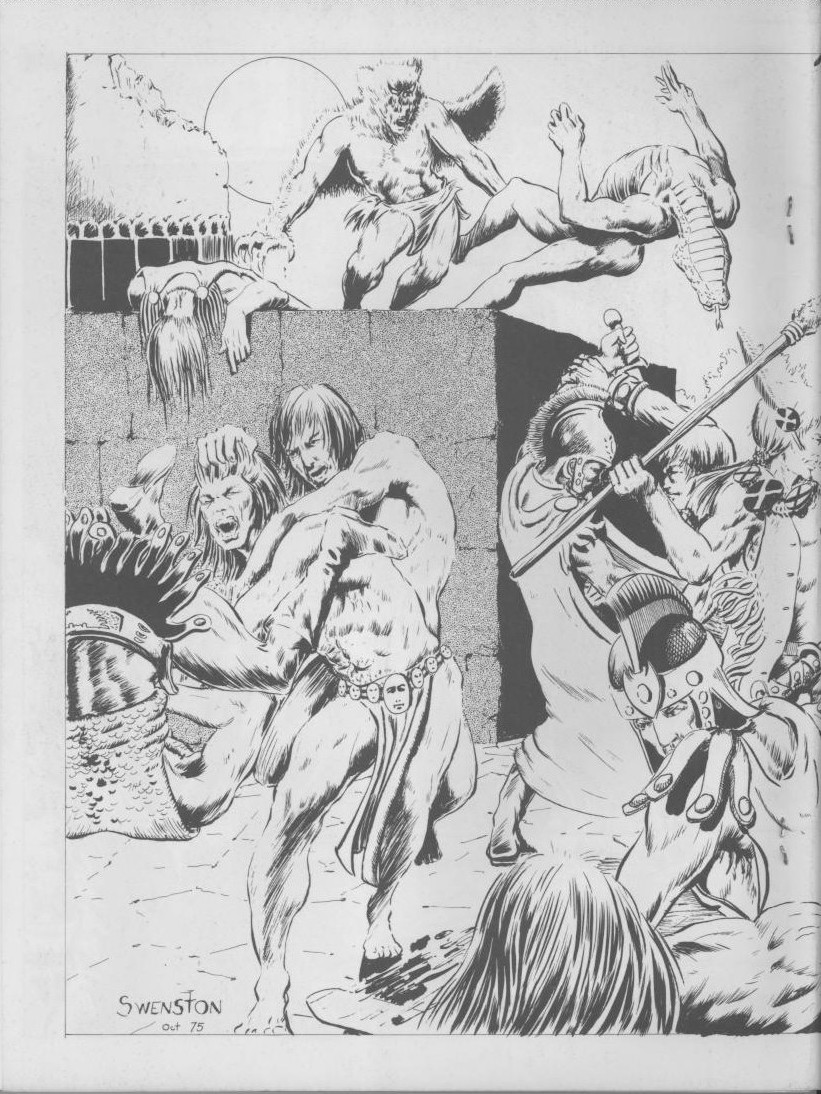
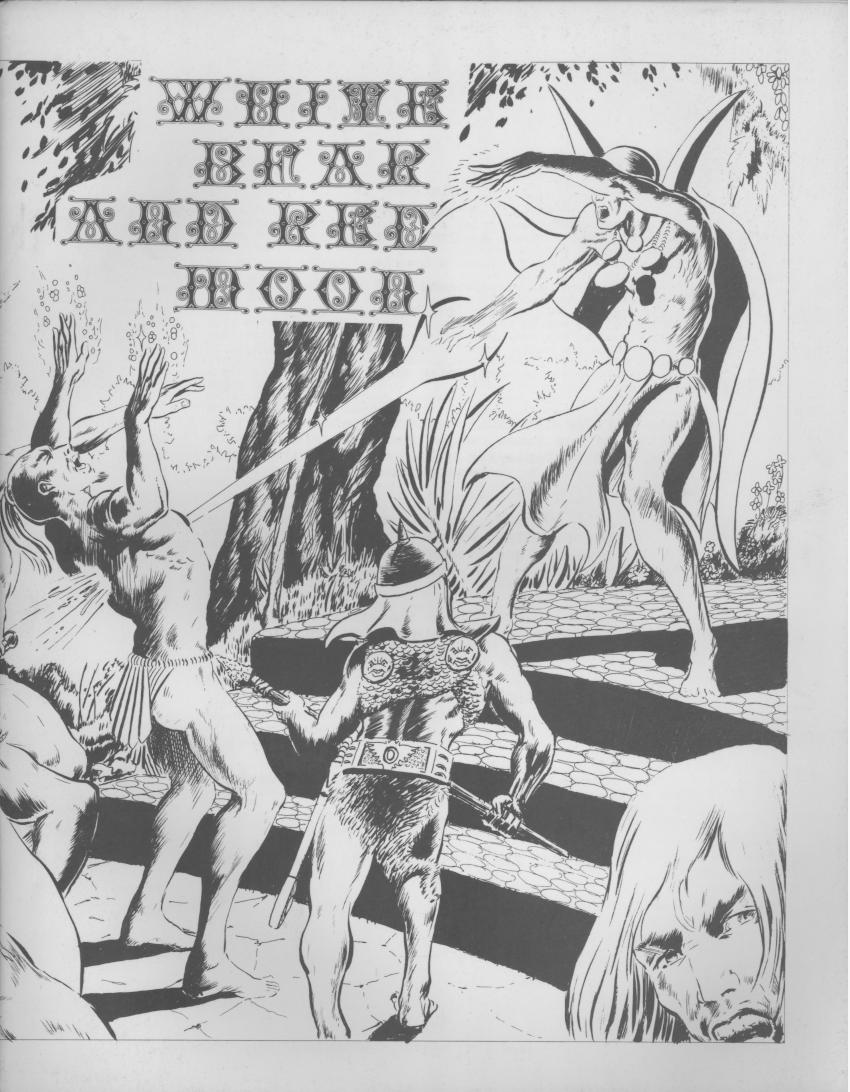
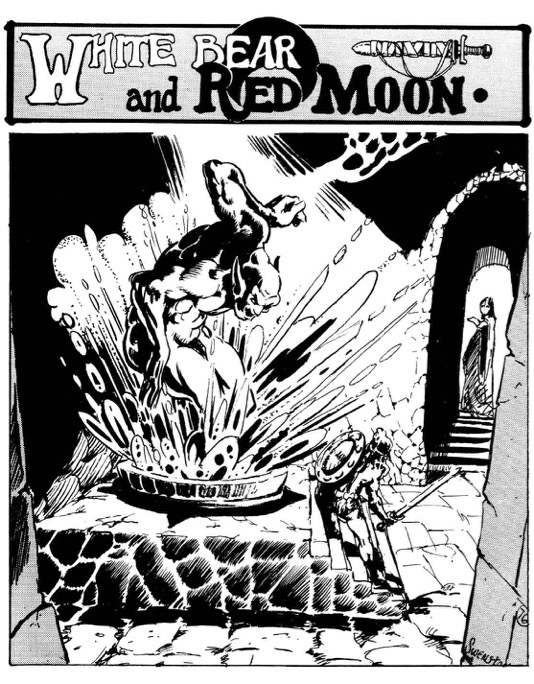
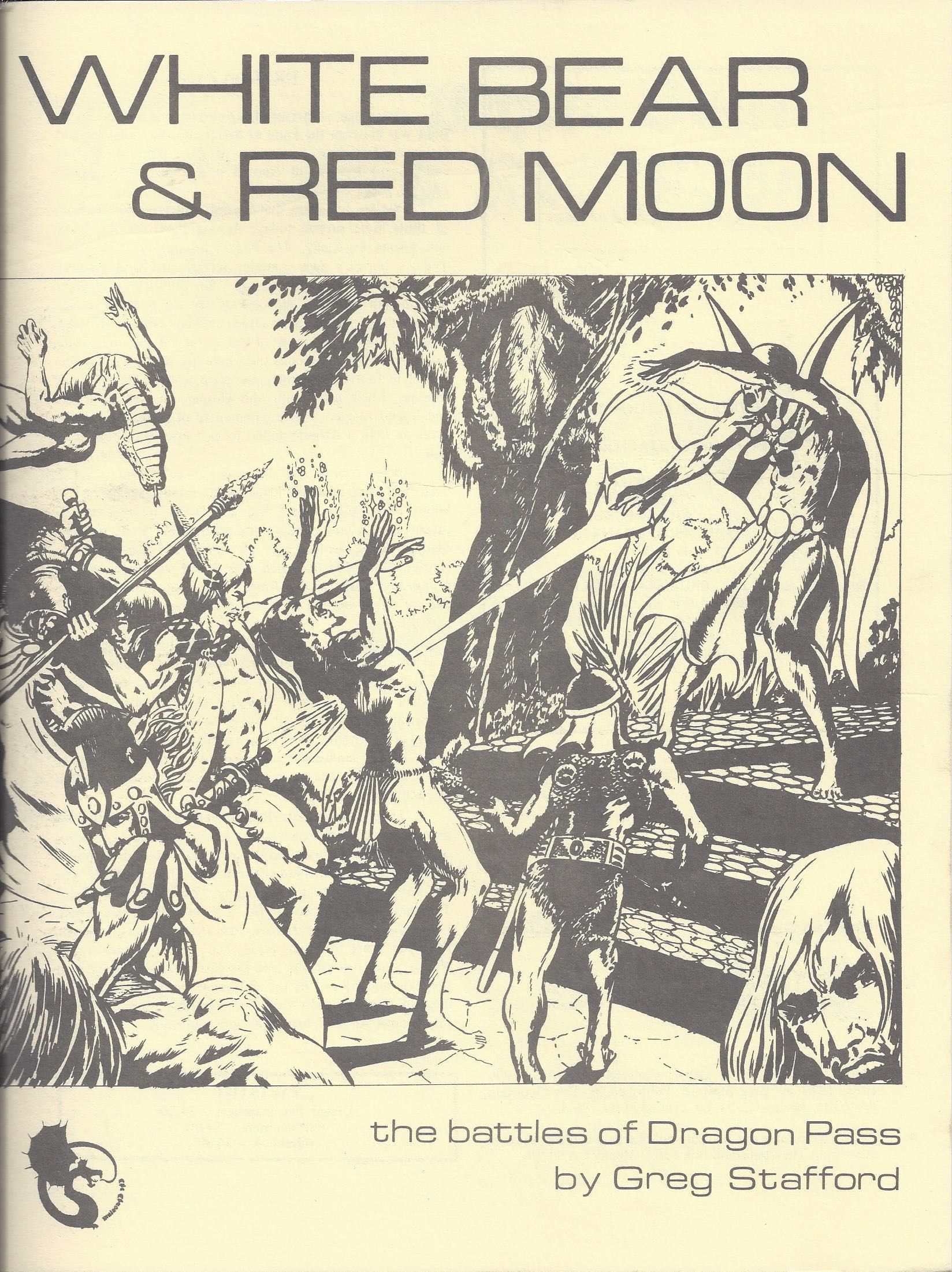
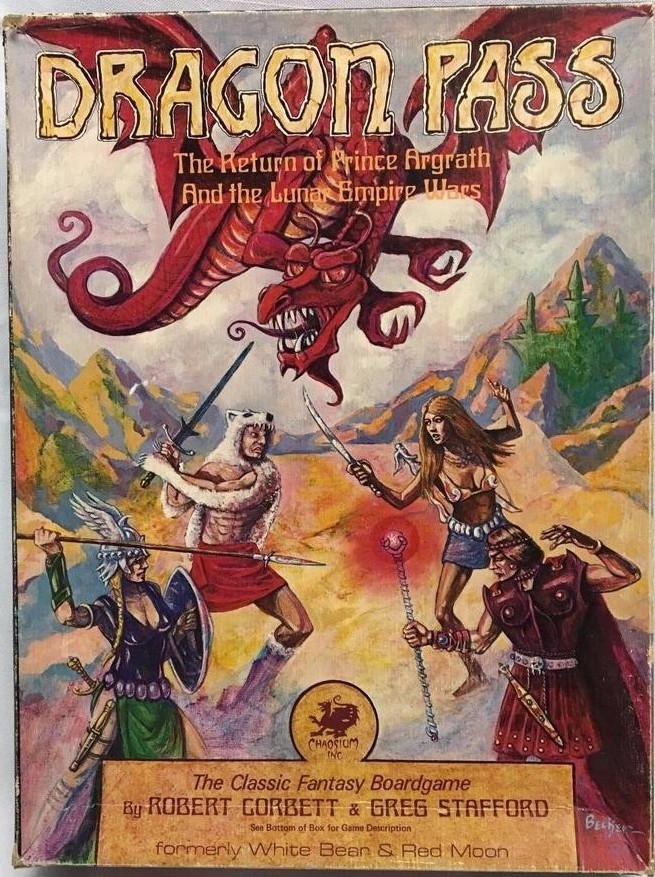
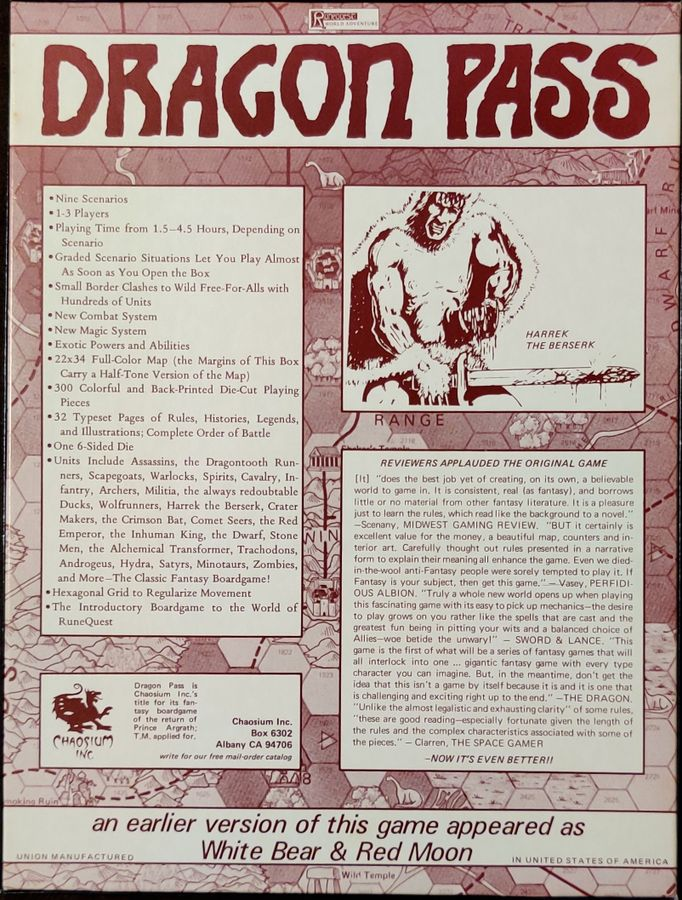
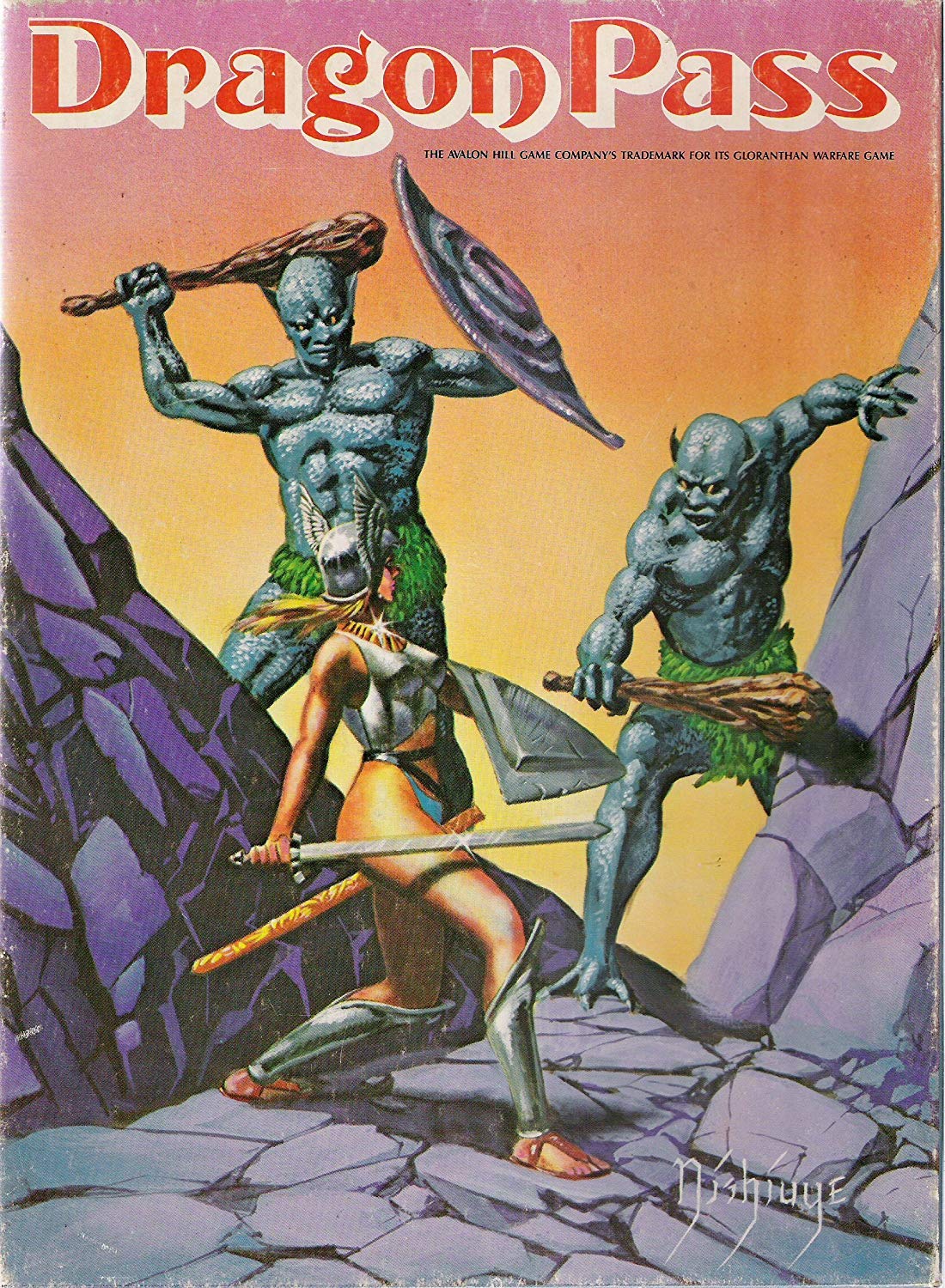
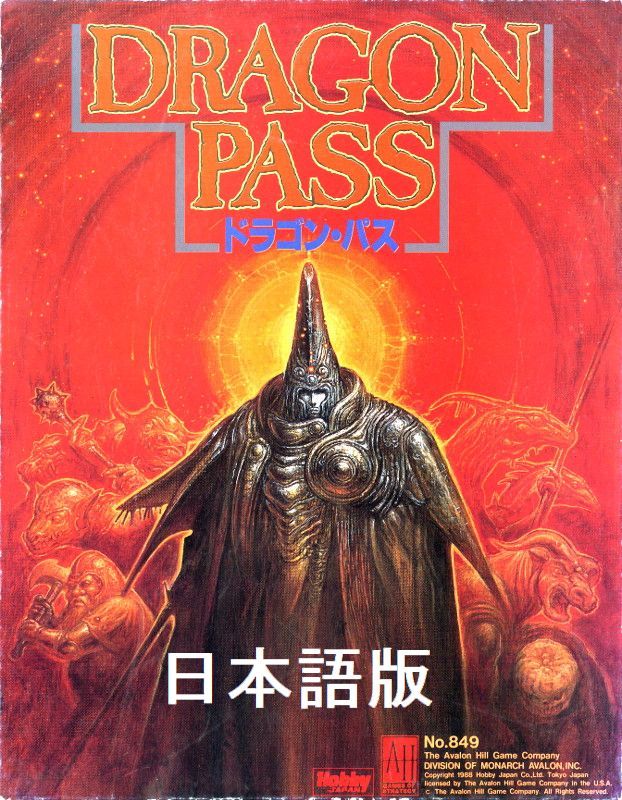

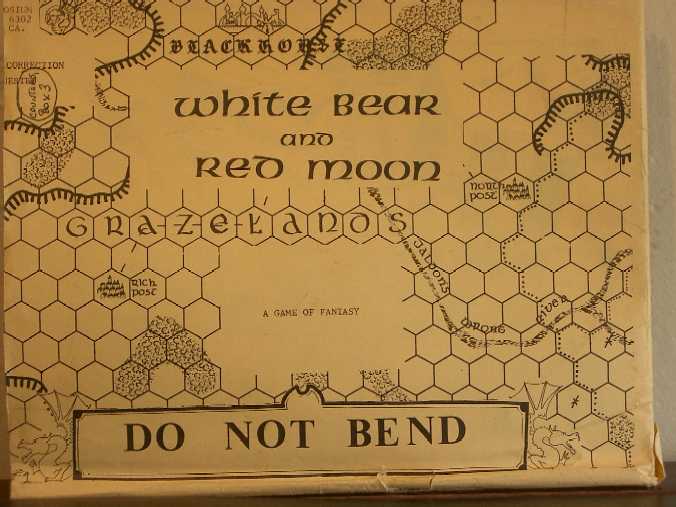
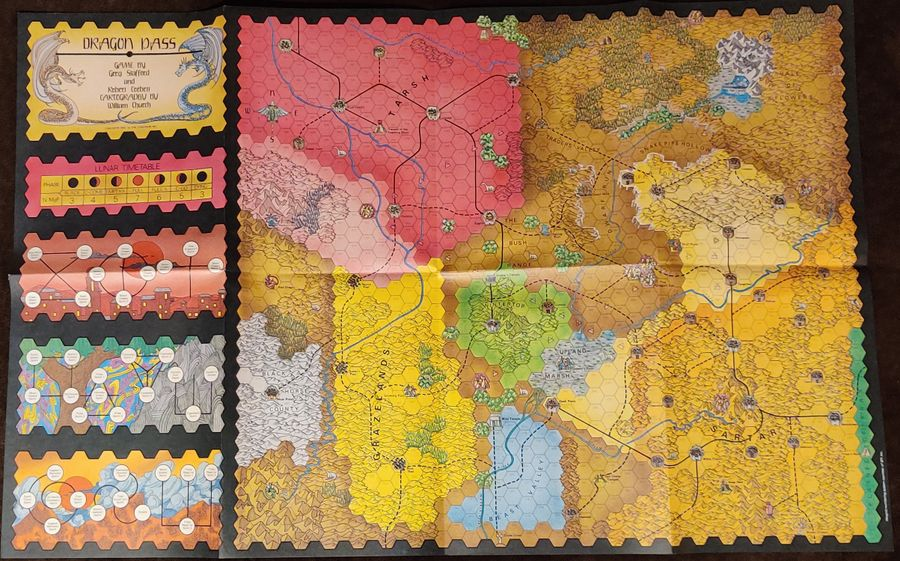
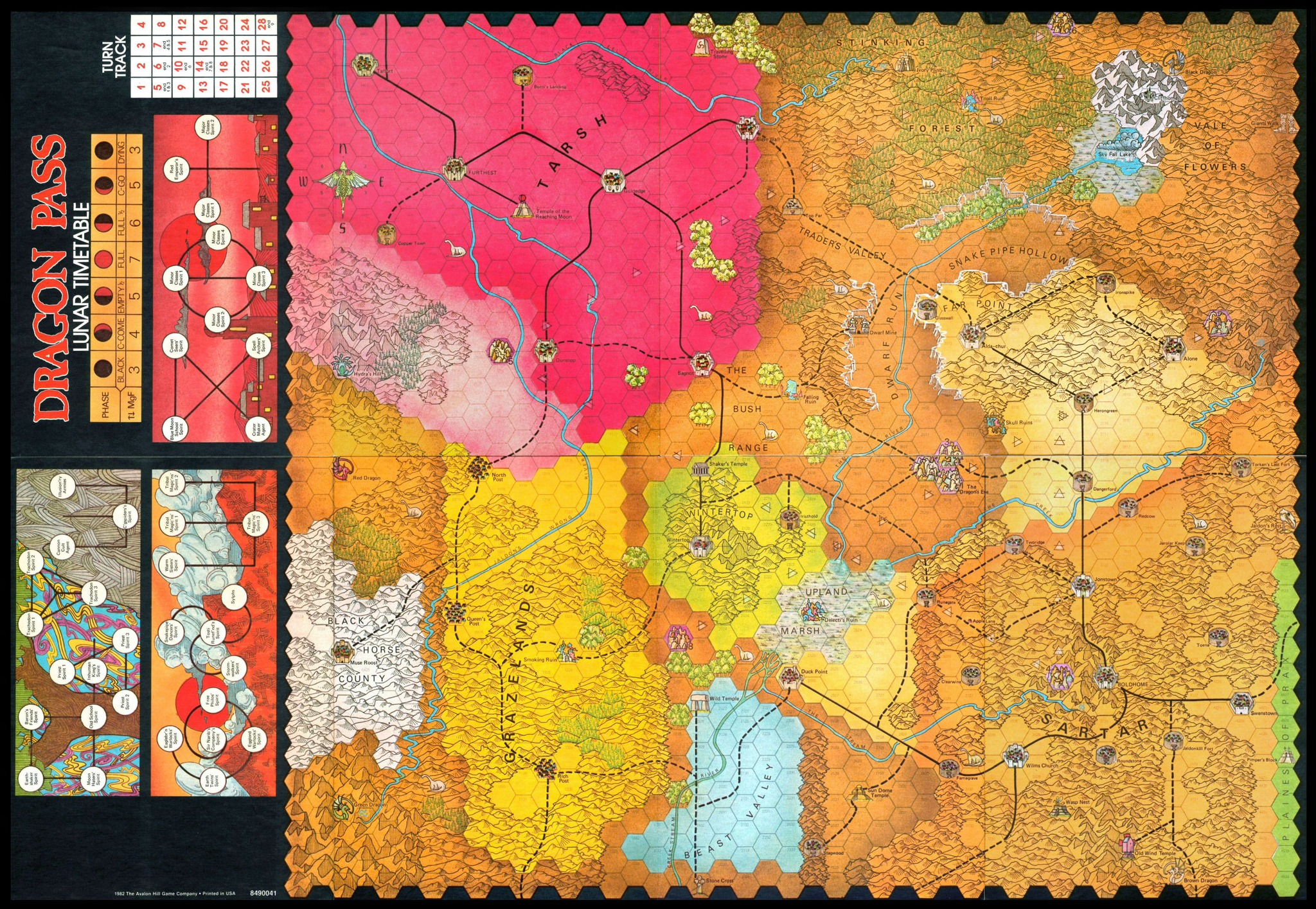
Articles
- Dragon Pass – Battalia Clarifications (1983)
- Dragon Pass – Random Events from La Guerre des Héroes (1993)
- White Bear & Red Moon – In Defense of Superheroes (1978)
- White Bear & Red Moon – Map Scale (1977)
- White Bear & Red Moon – Prisoners (1976)
- White Bear & Red Moon – The Sisters of Mercy (1977, 1992)
- White Bear & Red Moon – The Walktapus (1977)
Related Pages
- CHA1002 Nomad Gods (1977, 2017)
- CHA1052 Khan of Khans (2017)
- CHA3001-D Dragon Pass Conventions for Perilous Encounters (1978)
Page Last updated: 2025-06-27 15:43:13
